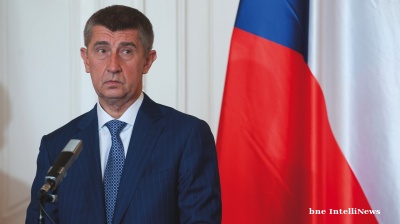The draft budget for 2025 is built on similar principles as the 2024 budget, with a clear focus on defence, security and social protection. International financial assistance remains crucial to maintaining budgetary stability. The 2025 draft budget aligns with the Budget Declaration for 2025-2027, the first such document adopted after the full-scale invasion, demonstrating continuity in budget policy.
Revenue indicators of the draft budget for 2025 take into account the “resource” bill No. 11416-d, dated August 30, 2024, which has already been adopted by the Parliament in its first reading. This bill introduces significant changes to tax collection. Among other provisions, it increases the military levy from 1.5% to 5%, extends its application to individual entrepreneurs under the simplified taxation system, raises the corporate tax rate for financial institutions to 25% and increases the corporate tax rate for banks to 50% for the year 2024. Additionally, it introduces advance payments for businesses engaged in retail of petroleum products. The government expects to raise an additional $2.8bn in tax revenues in 2025 through these changes.
Expenditures on defence and security remain a top priority throughout 2025. Planned expenditures under the Ministry of Defence's programmes amount to $34.8bn (a significant increase from the initial plan for 2024, which was $28.6bn), However, this amount is still likely to be insufficient if combat operations continue at the current intensity throughout 2025. Therefore, if 2024 trends persist and no additional funding is provided, the Ministry of Defence's budget will need to be revised in the second half of 2025, similar to the amendments made to the 2024 budget in August of last year.

The main sources of revenue for the budget in 2025 are expected to be taxes amounting to $44.1bn (13.9% higher than the planned for 2024) and external borrowing of $38.8bn (5.3% less than the 2024 plan, but 4.7% higher in hryvnia terms). After deducting the costs of servicing external state debt, external borrowing is expected to finance 42.9% of all budget expenditures in 2025, while domestic sources will cover 57.1% (higher than the 2024 plan). Alongside tax revenues, external financial assistance remains critically important to ensure Ukraine’s financial stability in 2025.

Growth of tax revenues in 2025 is anticipated across all key categories (PIT, CIT, VAT, excise tax). The primary driver of revenue growth will be changes in tax legislation, including higher tax rates and an expansion of the tax base. Part of the growth is also linked to macroeconomic factors, specifically inflation (projected at 9.7%) and the devaluation of Ukraine’s currency (the average annual FX rate is expected to be UAH45/$).

The government is relying on substantial and regular financial support from international partners next year.
In 2025, the general fund of the budget is expected to receive $36.9bn in loans from foreign partners, including $11.9bn from the European Union under the Ukraine Facility programme, $2.7bn from the IMF, $3.1bn from the World Bank and $19.1bn from other creditors. Additionally, around $2.0bn in external loans will be allocated to the special fund of the budget. Beyond loans, the government also plans to attract $1.9bn in grant funding – $1.6bn from the EU`s Ukraine Facility and $0.3bn from other foreign partners. At the same time, nearly all domestic borrowing in 2025 is planned to be used for the repayment of domestic state debt (borrowing $12.9bn, repayment $12.5 bn).
The planned state budget deficit is expected to reach $36.5bn, or 19.4% of GDP. To finance this deficit, $38.8bn in external borrowing and $12.9bn from domestic government bonds will be allocated. As a result, state and state-guaranteed debt is projected to continue to exceed 100% of GDP (101.8% of GDP by the end of 2025). This debt level, even after partial restructuring in 2024, will significantly exceed the Maastricht criterion of 60% of GDP and the “safe” level (which does not impede economic growth) of 64% of GDP for developing countries.

The government anticipates the implementation of the Extraordinary Revenue Acceleration Loans for Ukraine (ERA) mechanism, which could provide an additional $50bn. The servicing and repayment of these funds would be covered by the proceeds from frozen Russian sovereign assets held in G7 jurisdictions. Some of these funds could be used for direct budget support as early as 2025.


Read the full report here.
The Kyiv School of Economics (KSE) is a bne IntelliNews media partner and a leading source of economic analysis and information on Ukraine. This content originally appeared on the KSE website.
Opinion

IMF: Global economic outlook shows modest change amid policy shifts and complex forces
Dialing down uncertainty, reducing vulnerabilities, and investing in innovation can help deliver durable economic gains.

COMMENT: China’s new export controls are narrower than first appears
A closer inspection suggests that the scope of China’s new controls on rare earths is narrower than many had initially feared. But they still give officials plenty of leverage over global supply chains, according to Capital Economics.

BEYOND THE BOSPORUS: Consumed by the Donald Trump Gaza Show? You’d do well to remember the Erdogan Episode
Nature of Turkey-US relations have become transparent under an American president who doesn’t deign to care what people think.

COMMENT: ANO’s election win to see looser Czech fiscal policy, firmer monetary stance
The victory of the populist, eurosceptic ANO party in Czechia’s parliamentary election on October 6 will likely usher in a looser fiscal stance that supports growth and reinforces the Czech National Bank’s recent hawkish shift.


